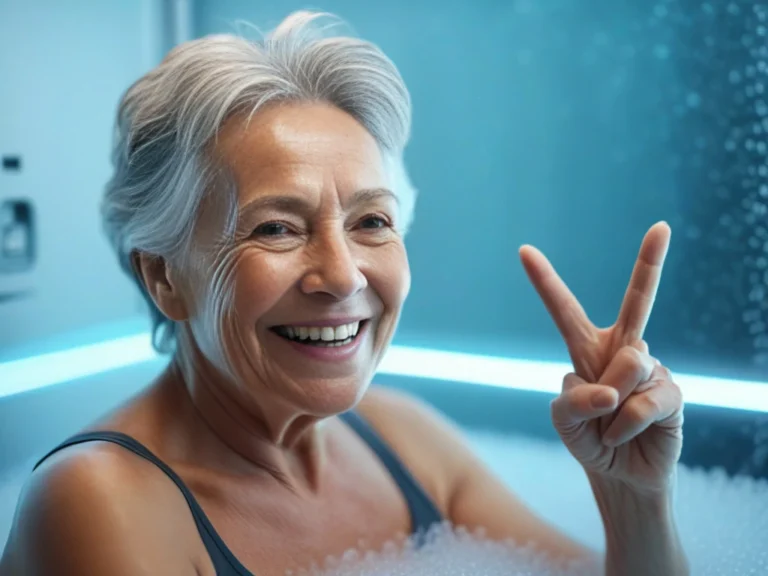Are the Benefits of Cryotherapy in London Backed by Science?
Cryotherapy has become increasingly popular in London in recent years, with many people seeking out this innovative treatment for its potential health benefits. But what exactly is cryotherapy? Cryotherapy is a form of treatment that involves exposing the body to extremely cold temperatures for a short period of time. This can be done through whole-body cryotherapy, where the entire body is exposed to cold temperatures, or localized cryotherapy, where specific areas of the body are targeted.
The popularity of cryotherapy in London can be attributed to its reputation as a cutting-edge treatment that offers a range of potential benefits. From pain relief and inflammation reduction to improved athletic performance and even anti-aging effects, cryotherapy has captured the attention of many individuals looking for alternative ways to improve their health and wellbeing.
Summary
- Cryotherapy is a popular wellness trend in London.
- Cryotherapy involves exposing the body to extreme cold temperatures.
- Research suggests that cryotherapy may have potential benefits for pain relief, inflammation reduction, athletic performance, skin health, and mental health.
- Safety concerns and risks of cryotherapy include frostbite, hypothermia, and breathing difficulties.
- When choosing a cryotherapy provider in London, it is important to look for experienced professionals and safe equipment.
The Science Behind Cryotherapy: How Does It Work?
To understand how cryotherapy works, it’s important to delve into the science behind it. When the body is exposed to extremely cold temperatures, it triggers a response known as vasoconstriction, where the blood vessels constrict and reduce blood flow to the extremities. This is followed by vasodilation, where the blood vessels expand and increase blood flow once the body returns to normal temperatures.
This process of vasoconstriction and vasodilation is believed to have several therapeutic effects. Firstly, it can help reduce inflammation by limiting blood flow to inflamed areas. Secondly, it can provide pain relief by numbing nerve endings and reducing pain signals. Lastly, it can stimulate the release of endorphins, which are natural painkillers and mood enhancers.
There are different types of cryotherapy that can be used depending on the desired outcome. Whole-body cryotherapy involves stepping into a chamber or cabin that is cooled using liquid nitrogen or refrigerated cold air. The temperature inside the chamber can reach as low as -200 degrees Fahrenheit (-130 degrees Celsius). Localized cryotherapy, on the other hand, involves using a handheld device to target specific areas of the body with cold air or liquid nitrogen.
Potential Benefits of Cryotherapy: What the Research Says
Cryotherapy has been touted for its potential benefits across a range of health conditions. Some of the potential benefits include reduced inflammation, pain relief, improved athletic performance, enhanced skin health, and even mental health benefits. While more research is needed to fully understand the extent of these benefits, there is some evidence to support these claims.
In terms of inflammation reduction, studies have shown that cryotherapy can help reduce markers of inflammation in the body. This can be particularly beneficial for individuals with conditions such as arthritis or sports injuries. Cryotherapy has also been found to provide pain relief, with some studies showing that it can help reduce pain intensity and improve overall quality of life.
When it comes to athletic performance, cryotherapy has gained attention for its potential to enhance recovery and improve performance. Some studies have shown that cryotherapy can help reduce muscle soreness and fatigue after intense exercise, allowing athletes to recover more quickly and perform at their best. However, more research is needed to fully understand the mechanisms behind these effects and determine the optimal timing and duration of cryotherapy sessions for athletes.
Pain Relief and Inflammation Reduction: Can Cryotherapy Deliver?
One of the main reasons people turn to cryotherapy is for pain relief and inflammation reduction. The cold temperatures used in cryotherapy can help numb nerve endings and reduce pain signals, providing temporary relief from aches and pains. Additionally, the vasoconstriction and vasodilation process triggered by cryotherapy can help reduce inflammation by limiting blood flow to inflamed areas.
The mechanisms behind these pain-relieving and anti-inflammatory effects are not fully understood, but it is believed that cryotherapy stimulates the release of endorphins, which are natural painkillers and mood enhancers. The cold temperatures may also help reduce the production of inflammatory molecules in the body.
While cryotherapy can provide temporary relief from pain and inflammation, it is important to note that it is not a cure-all solution. It may be most effective when used in conjunction with other treatments or therapies, depending on the underlying cause of the pain or inflammation. It is always recommended to consult with a healthcare professional before starting any new treatment.
Boosting Athletic Performance: Myth or Reality?
Another area where cryotherapy has gained attention is in its potential to boost athletic performance. The idea behind this claim is that cryotherapy can help athletes recover more quickly from intense exercise, allowing them to train harder and perform at their best. However, the research on this topic is still limited and conflicting.
Some studies have shown that cryotherapy can help reduce muscle soreness and fatigue after intense exercise, allowing athletes to recover more quickly. This can potentially lead to improved performance in subsequent training sessions or competitions. However, other studies have found no significant difference in performance between athletes who undergo cryotherapy and those who do not.
It is worth noting that the optimal timing and duration of cryotherapy sessions for athletes are still not well-established. Some studies have suggested that cryotherapy immediately after exercise may be more effective than delayed cryotherapy, while others have found no significant difference between the two. More research is needed to fully understand the potential benefits of cryotherapy for athletic performance and to determine the most effective protocols.
Skin Health and Anti-Aging Effects of Cryotherapy
In addition to its potential benefits for pain relief and athletic performance, cryotherapy has also gained attention for its effects on skin health and anti-aging. The cold temperatures used in cryotherapy can help improve blood circulation to the skin, which can promote a healthy complexion and reduce signs of aging.
When the body is exposed to cold temperatures, the blood vessels constrict and reduce blood flow to the extremities. This is followed by vasodilation, where the blood vessels expand and increase blood flow once the body returns to normal temperatures. This process of vasoconstriction and vasodilation can help improve blood circulation to the skin, delivering oxygen and nutrients that are essential for a healthy complexion.
Cryotherapy has also been found to stimulate collagen production in the skin, which can help improve skin elasticity and reduce the appearance of fine lines and wrinkles. Additionally, the cold temperatures can help tighten the skin and reduce puffiness, giving the face a more youthful appearance.
Mental Health Benefits: Can Cryotherapy Help with Anxiety and Depression?
In recent years, there has been growing interest in the potential mental health benefits of cryotherapy. Some proponents of cryotherapy claim that it can help reduce symptoms of anxiety and depression by stimulating the release of endorphins and improving overall mood. While more research is needed to fully understand these effects, there is some evidence to support these claims.
Endorphins are natural painkillers and mood enhancers that are released in response to various stimuli, including cold temperatures. Cryotherapy may stimulate the release of endorphins, which can help improve mood and reduce symptoms of anxiety and depression. Additionally, the cold temperatures used in cryotherapy may have a calming effect on the nervous system, promoting relaxation and reducing stress.
However, it is important to note that cryotherapy should not be used as a standalone treatment for mental health conditions such as anxiety or depression. It may be most effective when used in conjunction with other therapies or treatments recommended by a healthcare professional. It is always important to seek professional advice before starting any new treatment for mental health conditions.
Safety Concerns and Risks of Cryotherapy: What You Need to Know
While cryotherapy is generally considered safe when performed by trained professionals, there are some potential risks and safety concerns that need to be taken into consideration. The extreme cold temperatures used in cryotherapy can pose a risk of frostbite or burns if not properly controlled. It is important to ensure that the cryotherapy provider has appropriate safety measures in place, such as monitoring the temperature and duration of the treatment.
Individuals with certain medical conditions, such as Raynaud’s disease or cold allergies, may not be suitable candidates for cryotherapy. It is important to consult with a healthcare professional before undergoing cryotherapy to determine if it is safe for you.
It is also worth noting that cryotherapy is a relatively new treatment, and the long-term effects are still not well-understood. More research is needed to fully understand the potential risks and benefits of cryotherapy and to establish guidelines for safe and effective use.
Choosing a Cryotherapy Provider in London: What to Look For
If you are considering trying cryotherapy in London, it is important to choose a reputable provider that adheres to strict safety standards. Here are some tips for choosing a cryotherapy provider:
1. Research the provider: Look for providers that have a good reputation and positive reviews from previous clients. Check if they have any certifications or accreditations that demonstrate their commitment to safety and quality.
2. Ask about safety measures: Inquire about the safety measures in place, such as temperature monitoring and duration control. Make sure the provider has trained professionals who can properly administer the treatment.
3. Consultation and assessment: A reputable cryotherapy provider should conduct a thorough consultation and assessment before starting the treatment. They should ask about your medical history and any pre-existing conditions that may affect your suitability for cryotherapy.
4. Cleanliness and hygiene: Ensure that the facility is clean and well-maintained. The equipment used should be properly sanitized between each client to prevent the spread of infections.
5. Professionalism and customer service: The staff should be knowledgeable, friendly, and professional. They should be able to answer any questions or concerns you may have about the treatment.
Is Cryotherapy Worth Trying for Your Health and Wellbeing?
Cryotherapy has gained popularity in London for its potential health benefits, including pain relief, inflammation reduction, improved athletic performance, enhanced skin health, and even mental health benefits. While more research is needed to fully understand the extent of these benefits and establish guidelines for safe and effective use, there is some evidence to support these claims.
If you are considering trying cryotherapy, it is important to choose a reputable provider that adheres to strict safety standards. It is also recommended to consult with a healthcare professional before starting any new treatment, especially if you have any pre-existing medical conditions.
Overall, cryotherapy may be worth trying for individuals looking for alternative ways to improve their health and wellbeing. However, it is important to approach it with realistic expectations and understand that it may not work for everyone. As with any treatment or therapy, what works for one person may not work for another. It is always important to listen to your body and seek professional advice when needed.






